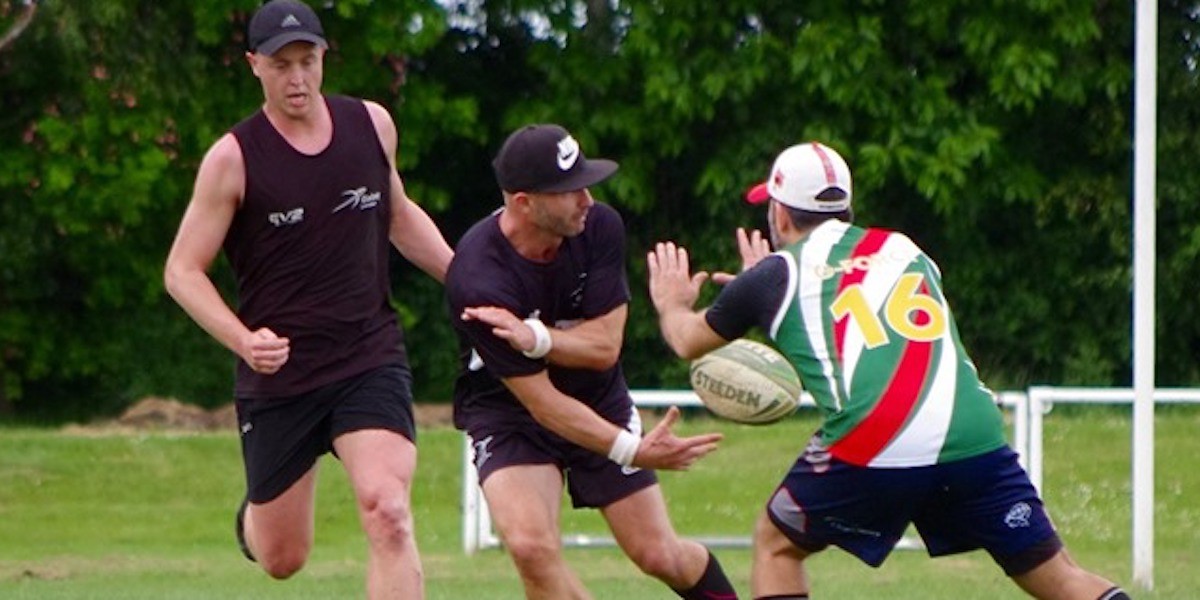Sign-up to receive all the latest news from England Touch
Rule amendments for National Touch Series 2020

The start of the year saw a number of rule amendments adopted by Touch Football Australia for their domestic calendar.
These amendments – which were made by a group of some of the most experienced Touch players, coaches and officials – were designed to reflect the modern game and represent the first significant formal changes in 20 years. They were also discussed extensively at a Federation of International Touch (FIT) workshop in Paris last November by representatives of over 20 National Touch Associations from across the globe.
England Touch will be following Australia’s lead for the National Touch Series (NTS) in 2020, and while a full set of rules will be distributed closer to the time the Association has compiled a series of summary graphics so that clubs and teams can begin to incorporate them into their training programmes.
CLICK HERE to download the graphics guide
The 2019/20 University NTS will continue to follow the FIT rules as they currently stand, with a review after the next round. Social and local tournaments can choose to adopt the new rules if they want to; it is expected that the new global FIT rules will be released in the next few weeks.
The amendments relate to terminology; options at the toss; clarifications regarding offside, obstruction vs deviation, incorrect restarts, sin bin periods and patterns of play within the 7m zone; the introduction of a ‘zero touch’ following interceptions; and a new-look extra time period for knockout matches.
2020 AMENDMENTS SUMMARY
Terminology
The terminology used throughout the rules has realigned our sport to its roots and the terminology commonly used. ‘Touchdowns’ are now ‘tries’, the ‘score zone’ is now the ‘in-goal area’, the ‘score line’ is the ‘tryline’ and ‘a period of time’ is ‘the sin-bin’
Starting the match
Winning the toss will result in choosing direction of play, sub box and newly off to attack or defend
Onside distance / 7m v 5m
Defenders will be required to retire a set distance of 7 metres from the ruck as opposed to the current ‘not less than 5 metres’ rule. This will improve consistency in its application and is more in line with what is currently being applied across our sport
Defensive player entering 7m zone
Players will be required to move forward once a defender enters that zone, as is the current rule, but will be required to now do so at a ‘reasonable pace’. What is deemed ‘reasonable pace’ will be well-defined throughout all education to aid consistent application
Obstruction v Deviation
The defender will be required to retire to an onside position without interfering or impeding the attacking team. This rule will replace the requirement to return to an onside position without changing direction. A player may now choose any direction and change that direction, as long as their actions do not interfere with the attacking team
Three penalty exclusion zone
Any three consecutive penalties during one possession conceded by a defending team that has entered the seven-metre zone will result in the last player to infringe being placed in the nearest sin bin area until their team regains possession of the ball
Half in place
If the Half is more than one metre away from the roll ball then all defenders in an onside position will be able to advance
Zero Touch
Any touch made following an intercept, or following a ball being deliberately touched in flight by the defending team and then regained by the attacking team, will be zero touch
Sin bin
Any player sent to the sin bin will remain in the sin-bin for a compulsory four completed sets of possession by both teams. This will no longer be at the discretion of the referee and will provide greater consistency in its application
Incorrect restart
A restart, eg a tap, is taken off the mark or taken instead of a roll ball will no longer result in a change of possession. The player will be simply required to return to the correct mark and perform the correct restart
Tap off
A Tap cannot now be taken until all attackers are onside and at least four defenders are onside. Furthermore, a Tap taken off the mark or performed instead of a roll ball no longer results in a change of possession. In all of the above cases the attacking team is simply directed to return to the mark and perform the Tap again
Drop-off
Tied knockout matches will now have an initial two-minute period of extra time with both teams down to four players. If the scores are still tied after the two minutes then teams reduce to three players with the next try determining the winner. In Mixed matches there can be no more than two males on the field at any one time
Interchange on interception/breakaway
Interchanges during a breakaway situation will be prohibited. Any player who enters the field from the interchange area during a breakaway, regardless of whether a try is scored or not, will be sent to the sin bin
The above list covers the most prominent changes; there are additional and more subtle changes that have been adopted to ensure the rules reflect current game trends.
Touch Football Australia has put together a series of videos explaining the amendments, which can be seen by CLICKING HERE.
OTHER RESOURCES
Summary of changes
This document summarises the main changes that have been made to the game. Another document outlining all of the changes in detail is being finalised and and will be released shortly.







